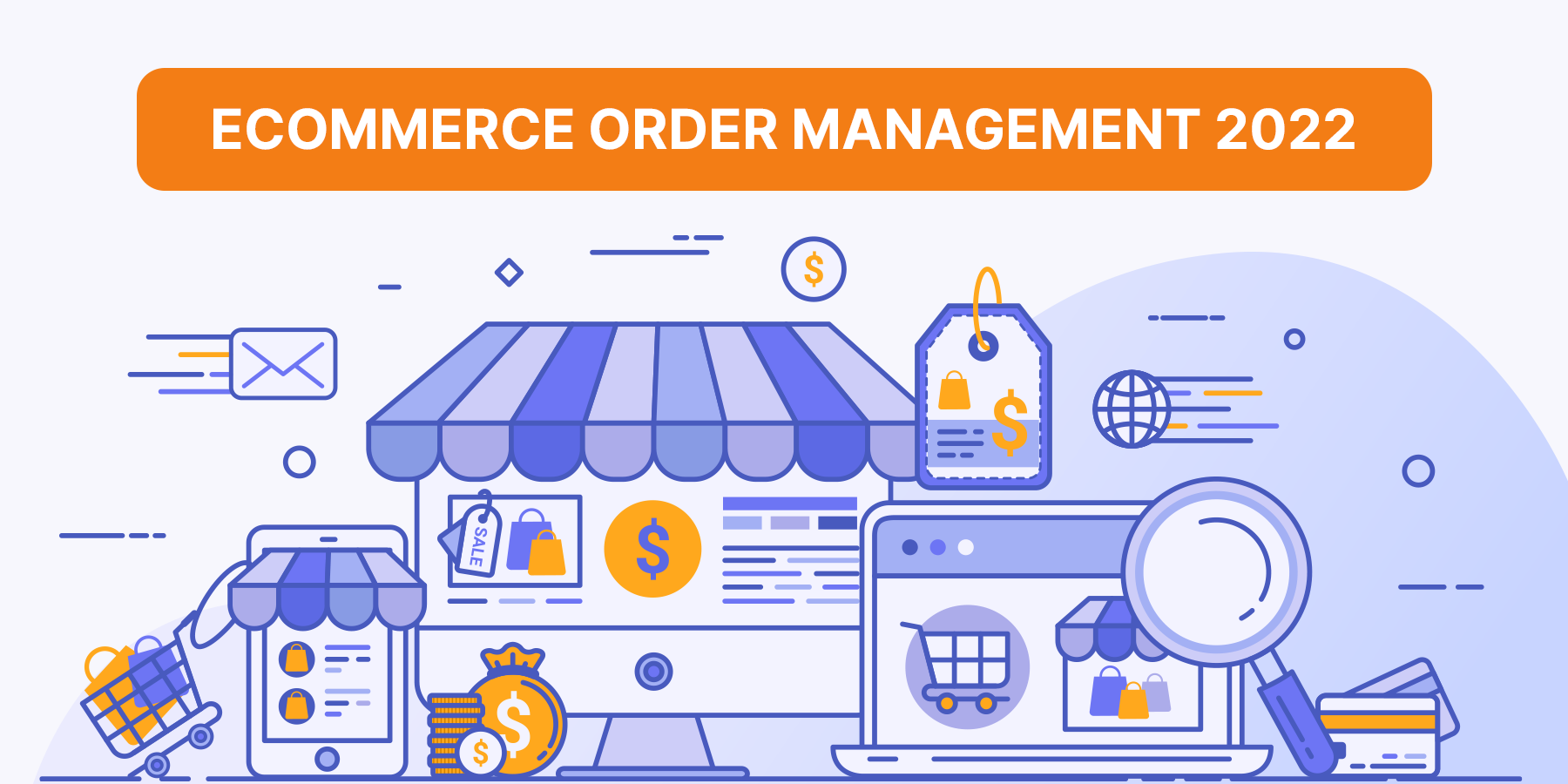Ecommerce will change drastically in 2020. Adobe reports that the total amount spent online in May was $82.5 billion. By April, the sector had grown by ten years in just three short months. Brands were compelled to review their operations due to constrained supply chains and unprecedented demand.
Nowadays, almost all shopping is done online, and there is more competition than ever. Retailers need to be resilient and nimble if they want to succeed in this environment of extreme speed.
Brands require a larger digital footprint in order to counter the issues presented by an online-only ecosystem. This covers retail partnerships, new sales channels, and selling on marketplaces. Seventy-three percent of customers use multiple channels to make purchases, according to a recent study. Complexity is also increased by adding sales channels. How can you keep up with both the competition and customer expectations? A system for managing online orders is a component of the solution.
How Does Order Management in E-Commerce Work?
An eCommerce order management services system's objective is to deliver a product to a customer as quickly as possible. Each item in the customer's order is managed throughout its entire journey, from the time it is added to the cart to the time it is delivered to the customer's door, as well as any subsequent returns.
1. The Procedure for Order Fulfillment
Every business has a different strategy for fulfilling orders. This may depend on the clients, the fulfillment sites, the returns procedures, and the suppliers. Although cycles can differ, the following steps are typically included in order fulfillment procedures:
- A customer places an order with the business.
- The business inputs the order into its computer system.
- The client is informed that the order has been received by the business.
- The closest warehouse or fulfillment facility receives the order.
- The order is taken from the shelf by a worker.
- The business prints shipping labels and prepares the order for shipping.
- The order is sent by the business.
- A notification that the order is being shipped is sent to the customer.
- The purchase is made.
2. Systems for Order Management Make Order Fulfillment Easier
The goal of an eCommerce order management system is to automate, streamline, and reduce the cost of the fulfillment process. These processes are optimized to lower shipping and administrative expenses, improve data quality, and pick and pack in the most effective manner. Numerous systems for managing eCommerce orders simplify credit card processing and returns. In order to adapt to the way you conduct business, the best operational software will integrate with the top eCommerce tools and platforms.
The e-commerce order management services system may create an invoice, print a shipping label, and update your QuickBooks accounting software when a customer makes a purchase. By integrating with your 3PL, FBA, or shipping carriers like FedEx or DHL, the eCommerce order management software can even track an order's progress once it has shipped. Your customer can follow an order's progress after it leaves a warehouse all the way to their front door. This is frequently made easier by the OMS.
How to Effectively Keep Track of Sales and Orders with Ecommerce Order Management?
Ecommerce order management software is essential when running a successful ecommerce store. Without proper order tracking, you won't know exactly how much inventory you have left, how much money you've made, or how well your customers are responding to your products.
In this article we'll go over some tips on how to track sales and orders with ecommerce order management software.
1. Set Up Inventory Tracking
Setting up inventory tracking is the first step towards managing your inventory effectively. When you set up inventory tracking, you're able to view all of your current stock levels, including the quantity remaining on hand.
You can also monitor your inventory costs and calculate profit margins.
2. Create Purchase Orders
Purchase orders allow you to automatically place orders for items that you sell. They make sure that you have enough product to fulfill customer orders.
They also let you manage multiple purchase orders simultaneously so you don't have to worry about missing out on sales due to slow shipping times.
3. Manage Customer Feedback
Customer feedback allows you to respond to customer reviews and comments. You can also assign ratings to your products based on customer satisfaction.
This lets you find out which products are selling best and which ones aren't performing as expected.
4. Monitor Shipping Times
Shipping times are crucial to keeping your customers happy. With order tracking, you can easily see when shipments are being sent and when they arrive.
You can also adjust shipping rates according to delivery dates.
5. View Sales Data
Sales data gives you insight into how well your products are selling. You can learn which products are selling best, which
Key Components of Successful Order Management
Brands should look for an order management system that supports their current infrastructure in order to take advantage of the eCommerce growth. The functionality of your company's e-commerce order management services can make or break it. Here are some considerations to make.
1. It Integrates with Various Business Systems
The ability of a distributed order management system to integrate with business infrastructure, service providers, and supply chain technology is a crucial feature. The majority of e-commerce order management systems can be integrated with your inventory manager, accounting software, warehouses, and other systems. Some even offer an App Store or, in the event that neither is available, open APIs that can be used to connect to third parties. Order management will be as seamless and automated as possible thanks to integrations with your existing systems.
2. Automation Eliminates Manual Processes
The better, the less manual processes there are. Manual processes are much more prone to human error and can never match the speed of order management software. Automation is offered by a system for managing eCommerce orders, from calculating shipping costs to sending fulfillment requests.
3. It Offers a Worldwide Service
Our world is becoming more and more globalized. Every day, brands accept orders from outside their borders. The majority of order management systems are capable of facilitating international eCommerce orders and payments from any nation and currency. This increases a brand's retail footprint and enables them to benefit from their experiences in new markets as they learn and develop.
4. It Reports Stock Needs and Makes Forecasts
To prevent reordering or overselling, many eCommerce order management services systems can forecast how much safety stock you'll need. This may be crucial in Q4 and other periods of unanticipated demand fluctuations. A merchant-fulfilled strategy can also be supported by an order management system that connects to your inventory channels. You may have more freedom and authority over order management processes as a result.
5. It Functions on All Channels
In addition to your website or online store, marketplaces, or whatever main sales channel you use to sell, ecommerce order management services systems can satisfy customer needs across all the eCommerce platforms and sales channels you'd anticipate. As your business expands, managing these orders through a single channel will become more and more difficult. Without a way to combine the sales orders and data from all of your channels, your staff will become burnt out and more prone to errors. Each channel has its own logins and procedures.
All of your channels can be integrated into a single user interface using an eCommerce order management system. Your staff will spend far less time filling orders and orienting new hires as a result. By consolidating all the information you require in one easily accessible location based on real-time data, it will also provide you with a comprehensive view of orders and data and help you avoid mistakes.
Wrapping Up
In the world of eCommerce, a system for order management services is essential. The fastest, most personalized, and error-free order fulfillment experience is what customers have come to expect, and it can only be provided by using this method. As an eCommerce retailer, you must constantly think more quickly, personally, and technologically. The level of customer satisfaction offered by today's order processing services is unmatched in these areas.
By outsourcing order processing, you can avoid managing and maintaining the order processing and fulfillment system. With regard to streamlining their order, sales, and fulfillment processes, Wow Customer Support has helped both small and large businesses across a variety of industries.






